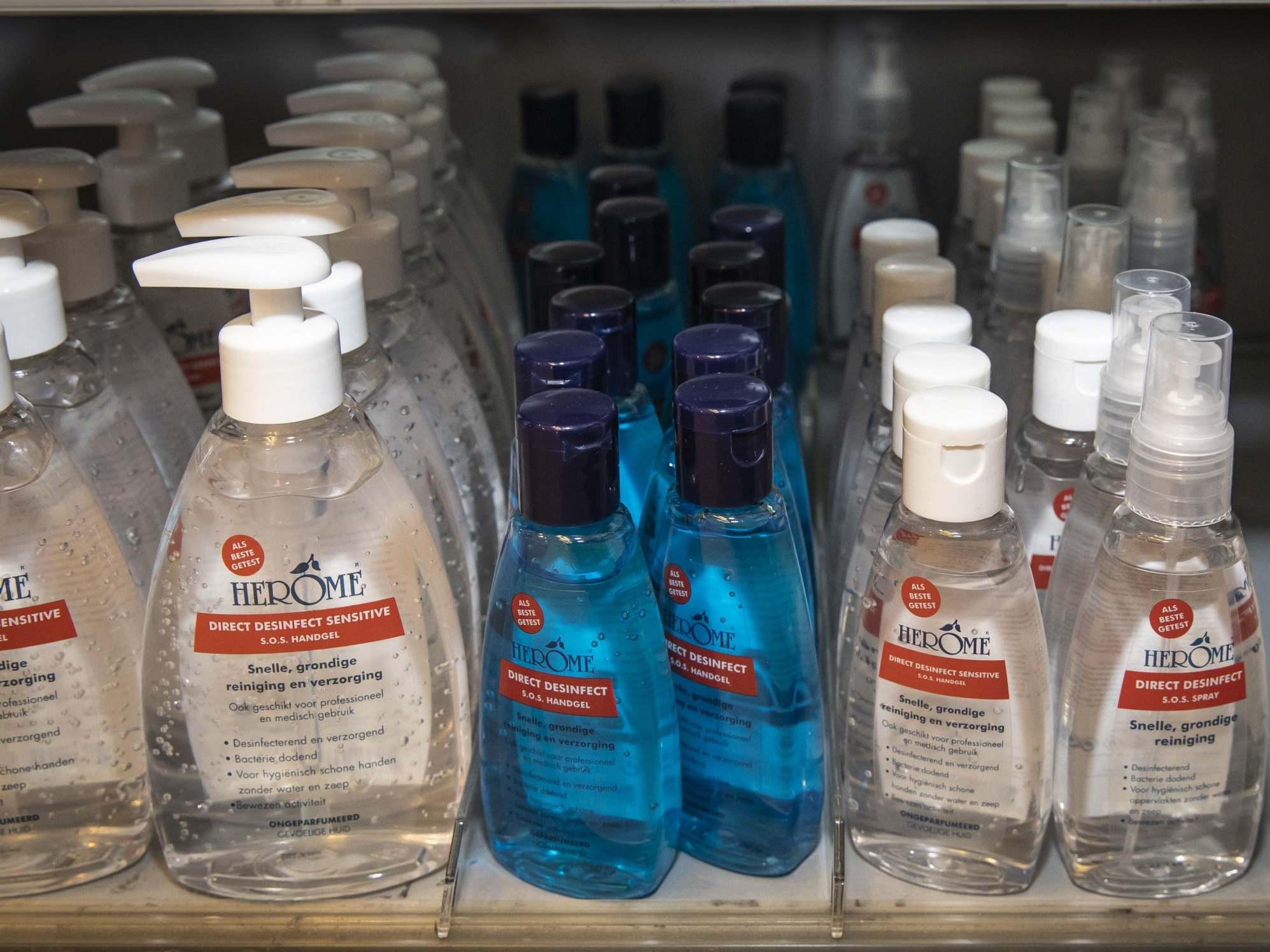How to make your own hand sanitiser
As stocks of hand gel and soap dwindle across the country, Shobana Dissanayeke and James McEvoy explain how you can make your own

Your support helps us to tell the story
From reproductive rights to climate change to Big Tech, The Independent is on the ground when the story is developing. Whether it's investigating the financials of Elon Musk's pro-Trump PAC or producing our latest documentary, 'The A Word', which shines a light on the American women fighting for reproductive rights, we know how important it is to parse out the facts from the messaging.
At such a critical moment in US history, we need reporters on the ground. Your donation allows us to keep sending journalists to speak to both sides of the story.
The Independent is trusted by Americans across the entire political spectrum. And unlike many other quality news outlets, we choose not to lock Americans out of our reporting and analysis with paywalls. We believe quality journalism should be available to everyone, paid for by those who can afford it.
Your support makes all the difference.To slow the spread of coronavirus we’re being told to wash our hands more, preferably with soap and water, or failing that, with hand sanitisers. The resulting rush to buy hand sanitisers has led to empty shelves in supermarkets and chemists. But it hasn’t taken long for recipes for hand sanitisers to appear online. But do they work?
Let’s take a look at a popular one:
1. Combine in a bowl:
- 2/3 cups rubbing alcohol (99.9 per cent isopropyl alcohol)
- 1/3 cup aloe vera gel
2. Stir. Decant into a soap or pump bottle
3. Give it a good shake every now and then.
Aloe vera is a moisturiser that will stop your skin drying out. That’s useful, since cracks in the skin can increase the risk of bacterial infection. The main active ingredient in this sanitiser is the isopropyl alcohol (isopropanol). Most commercial hand sanitisers contain either ethanol, isopropanol, n-propanol or a combination of any two.
Mixtures of 60 per cent-80 per cent alcohol by volume kill microorganisms, so the 66 per cent alcohol concentration in the recipe looks about right if pure rubbing alcohol (also known as “surgical spirits”) is used. A quick look at Amazon, though, shows that it is usually sold as a pre-prepared working dilution between 50 per cent and 70 per cent, to be used directly on surfaces. Mixing even the 70 per cent solution with the aloe vera will make the final alcohol concentration too low to be useful.
Although it’s hard to get hold of, pure ethanol could be used in the recipe instead of isopropanol. Ethanol is the alcohol found in spirits, and another homemade sanitiser that has gained some attention uses vodka.
Most vodka contains about 40 per cent alcohol – not nearly enough for an effective hand sanitiser. But Balkan 176, the strongest vodka available in the UK, comes in at a staggering 88 per cent ethanol. This could be used to make another 66 per cent alcohol hand sanitiser with three parts vodka to one part aloe vera. At around £45 for 700ml it would make an expensive product, but since it was sold out on all the sites that we looked at, maybe there’s a market for it.
How do these homemade recipes compare with the WHO formulations? Well, not too badly since both contain the alcoholic active ingredient and an emollient
A 2017 study showed that both ethanol and isopropanol preparations made to the official World Health Organisation (WHO) formulations inactivate the Sars and Mers viruses, which are coronaviruses related to the one that causes Covid-19. These formulations contain final concentrations of either 80 per cent ethanol or 75 per cent isopropanol along with 1.45 per cent glycerol and 0.125 per cent hydrogen peroxide.
Everything in these formulations is mixed in distilled water or simply cold boiled water. The hydrogen peroxide is used to inactivate any contaminating bacteria in the mix, but is not an active ingredient in the sanitiser. The glycerol is a humectant, a substance to help retain moisture, and can be replaced with any other emollient or moisturiser to help with skincare – including aloe vera.
How do these homemade recipes compare with the WHO formulations? Well, not too badly since both contain the alcoholic active ingredient and an emollient. The problem might be that the 66 per cent alcohol concentration is towards the lower end of the effective range.
Studies have shown that higher alcohol concentrations work better, and we know that the WHO 75 per cent isopropanol or 80 per cent ethanol formulations can kill other coronaviruses. The homemade products may not be strong enough to inactivate the virus quite as effectively as the WHO formulation. On the other hand, some commercial hand sanitisers contain as little as 57 per cent alcohol, so these homemade products would be better than that.
In our opinion, if you want to make a homemade hand sanitiser you should go with a modified version of the first recipe, upping the rubbing alcohol to the WHO-recommended concentration: three-quarters of a cup of isopropanol and a quarter of a cup of aloe vera gel. You could even substitute glycerol for the aloe vera gel. It’s cheaper, but it won’t smell as nice.
Always follow the safety instructions on whichever alcohol you use and remember this is only for cleaning your hands. Don’t bathe in it and definitely don’t drink it!
Shobana Dissanayeke is a senior lecturer in Biological Sciences at Royal Holloway. James McEvoy is a senior lecturer in Biomedical Sciences at Royal Holloway. This article first appeared on The Conversation
Join our commenting forum
Join thought-provoking conversations, follow other Independent readers and see their replies
Comments